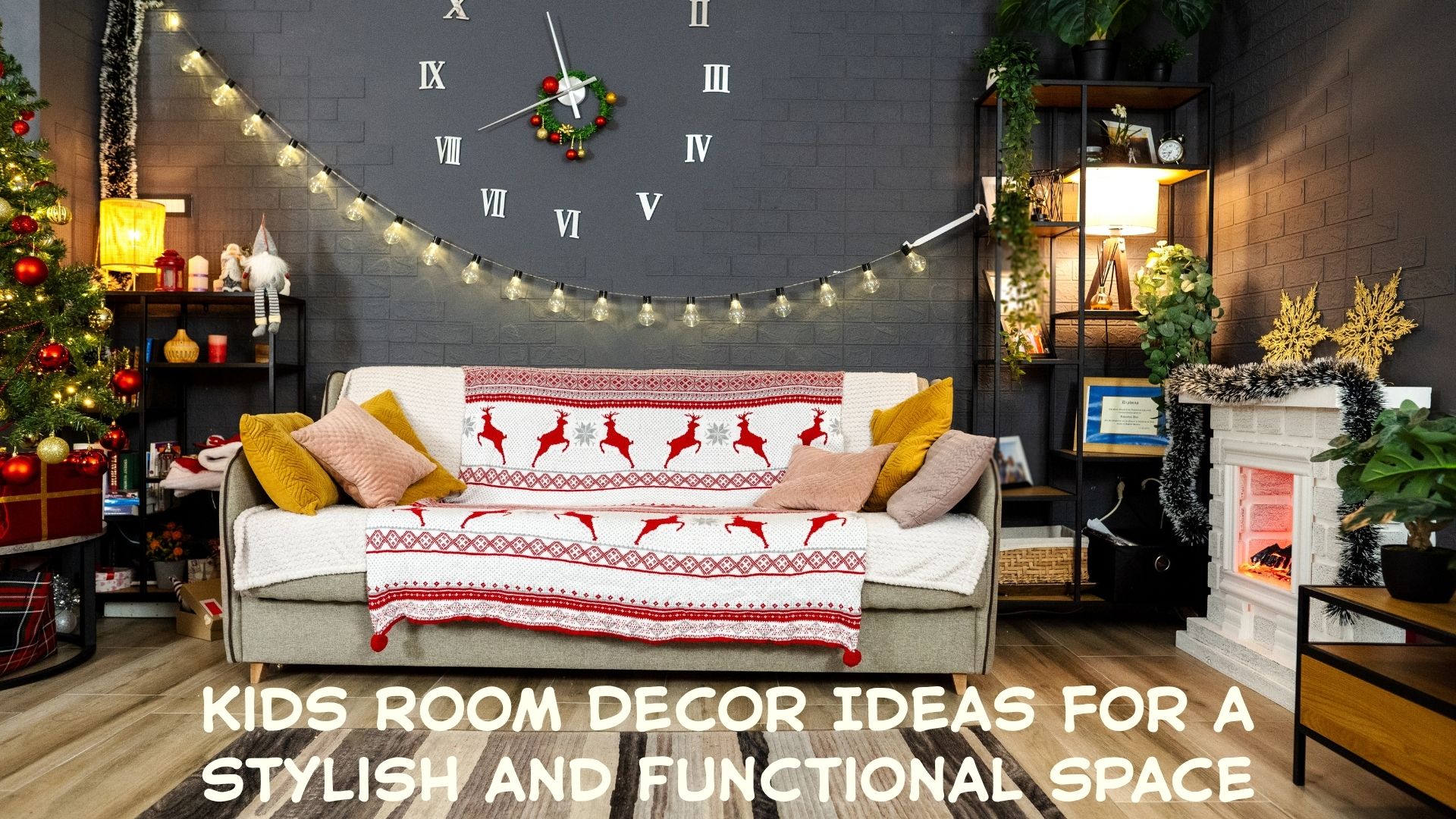Kids Room Decor Ideas for a Stylish, Fun, and Functional Space
A child’s bedroom is more than just a place to sleep — it’s a world where imagination grows, learning happens, and personality shines. The right kids room decor can inspire creativity, encourage organization, and create a cozy environment where children feel safe and happy.
Whether you’re designing for a toddler, a preschooler, or a teenager, the key is to balance style, comfort, and practicality. Here’s your complete guide to creating the perfect kids’ room that’s beautiful, functional, and adaptable.
1. Pick a Theme That Reflects Their Personality
A theme sets the tone for the entire room and gives you a guide for selecting colors, patterns, and accessories.
Popular Kids Room Themes:
- Adventure/Travel: Maps, globes, vintage suitcases, wall murals of famous landmarks.
- Nature/Wildlife: Forest wallpaper, animal prints, indoor plants (non-toxic).
- Space Exploration: Glow-in-the-dark stars, rocket ship beds, planetary mobiles.
- Fairy Tale/Princess: Canopy beds, pastel colors, castle-shaped shelves.
- Sports: Wall decals of their favorite team, basketball hoop over the door.
Pro Tip: Use removable wall stickers, themed bedding, and artwork so you can switch themes easily as your child grows.
2. Make Safety a Top Priority
Decor should never compromise safety. In a kids room design, pay attention to:
- Securing bookshelves and wardrobes to the wall to prevent tipping.
- Choosing rounded furniture edges to avoid injuries.
- Using non-slip rugs to prevent falls.
- Avoiding cords from blinds or lamps that kids could pull on.
- Selecting non-toxic, low-VOC paints and finishes.
3. Smart Storage Solutions for a Clutter-Free Room
Children accumulate toys, books, clothes, and art supplies quickly. Smart storage keeps the space organized and encourages kids to put things away.
Ideas:
- Under-Bed Drawers: Store seasonal clothes or toys.
- Vertical Shelving: Use wall space for books, art, or display items.
- Storage Benches: Provide seating and hidden storage.
- Clear Plastic Bins with Labels: Helps kids identify where items belong.
Hack: Color-code storage bins so even younger kids can clean up without needing to read labels.
4. Create Interactive and Learning Zones
A kid’s room should also be a place where learning feels fun.
Inspiration:
- Chalkboard Wall: Perfect for drawing, practicing spelling, or creative art.
- Reading Nook: A small tent or bean bag corner with shelves of age-appropriate books.
- Learning Wall Art: Alphabet charts, multiplication tables, or world maps.
- Activity Table: For puzzles, crafts, or homework.
5. Choose Colors That Support Mood and Creativity
Color psychology can play a big role in a child’s mood and behavior.
Suggestions:
- Soft Blues & Greens: Calming and great for focus.
- Yellow & Orange: Bright and cheerful, promotes energy.
- Pastel Pink & Lavender: Comforting and nurturing.
- Neutral Base with Pops of Color: Keeps the room fresh as tastes change.
6. Multi-Functional Furniture for Small Spaces
When the room is small, furniture needs to do double duty.
Options:
- Loft Bed with Desk: Saves floor space and creates a study zone.
- Convertible Crib to Bed: Lasts for years.
- Fold-Down Desk: Folds away when not in use.
7. Add Personal Touches for a Sense of Belonging
Kids feel more connected to their space when it reflects their life and achievements.
- Display their artwork in frames.
- Hang photos of family and friends.
- Use customized name signs or monogram pillows.
8. Play with Textures for Comfort
Textures make a room feel cozy and inviting. Mix and match fabrics like soft cotton, plush velvet, and knitted blankets. Add rugs for warmth and sound absorption.
Must Read: 20 Magical Christmas Decor Ideas to Make Your Home Festive and Bright
9. Plan for Growth and Changing Needs
A room for a 5-year-old will look different from a 12-year-old’s. Choose furniture that grows with your child and swap smaller decor elements to keep the space fresh.
10. Layer Lighting for Function and Mood
Good lighting supports play, reading, and relaxation.
- Overhead Lighting: For general illumination.
- Task Lighting: Desk lamps or reading lights.
- Accent Lighting: String lights or night lights for a magical feel.
Extra Kids Room Decor Tips for Style and Function
- Use wall-mounted hooks for backpacks and hats.
- Include a small mirror to encourage independence.
- Keep a laundry basket in the room to teach responsibility.
- Rotate toys every few weeks to keep the space feeling new.
Final Thoughts
Designing a child’s room is a rewarding project that blends style, function, and imagination. The right kids room decor can nurture creativity, encourage learning, and create a safe, comfortable haven for your child to enjoy for years.








3 Comments